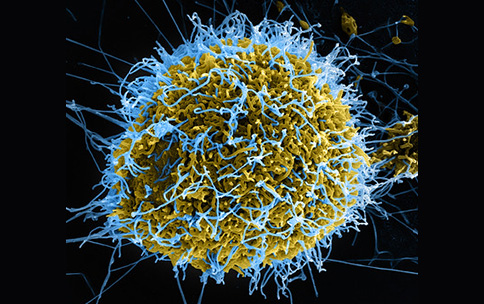
Piecing Together the Requirements to Tackle Antiviral Drug Resistance and Future Pandemics
Viruses are a major threat to human health and given that they spread through social interactions have costly consequences. In the United States during the 2019 – 2020 influenza season, an average of 38.2 million cases, 404,646 hospitalizations, and 21,909 influenza related deaths occurred1. The economic burden of influenza in the United States has been estimated at $5.8 billion annually2. Non-influenza-related viruses affecting humans such as measles virus, Ebola virus and chickenpox virus have been similarly devastating and have resulted in deadly epidemics in history and continue to be a major threat against humanity3. Researchers have historically investigated the characteristics that make a virus able to successfully infect a human cell. However, determination of the role of viral shape in cell infection has been challenging due to the shape only being partially genetically encoded and so not amenable to typical genetic experiments.
Now, a team lead by New Innovator Awardee Dr. Tijana Ivanovic at Brandies University has uncovered that the shape of the virus particles determines the efficiency of the virus attaching and fusing to the human cell when viral activity is compromised. Viral particles that are filamentous have an advantage over viral particles that are spherical when there are neutralizing pressures from the human immune response on the viral cell entry machinery. Filamentous particles have been shown to directly resist cell-entry pressures and are less sensitive to inhibition activities by the immune system antibodies. They are able to fuse to the human cell membrane more efficiently at high neutralizing pressure and longer filaments are better able to resist extreme inactivation efforts by human antibodies. Although this is a promising discovery, further studies are needed to determine additional individual specific requirements that are also necessary for successful viral infection. However, this discovery and further studies may potentially lead to the development of antiviral treatments that directly target long filamentous virus particles to possibly curb pandemics and overcome antiviral drug resistance.
The shape of pleomorphic virions determines resistance to cell-entry pressure.
Li T, Li Z, Deans EE, Mittler E, Liu M, Chandran K, and Ivanovic T. Nature Microbiology. 2021 Mar 18. doi: 10.1038/s41564-021-00877-0. PMID: 33737748
References
- Centers for Disease Control and Prevention, Estimated Influenza Illnesses, Medical visits, Hospitalizations, and Deaths in the United States — 2019–2020 Influenza Season. Retrieved from: https://www.cdc.gov/flu/about/burden/2019-2020.html.
- Ozawa S., et al. Modeling the economic burden of adult vaccine-preventable diseases in the United States. Health Aff. (Millwood) 35, 2124–2132 (2016).
- Muñoz LS, Garcia MA, Gordon-Lipkin E, Parra B, Pardo CA. Emerging Viral Infections and Their Impact on the Global Burden of Neurological Disease. Semin Neurol. 2018 Apr;38(2):163-175. doi: 10.1055/s-0038-1647247. Epub 2018 May 23. PMID: 29791942



